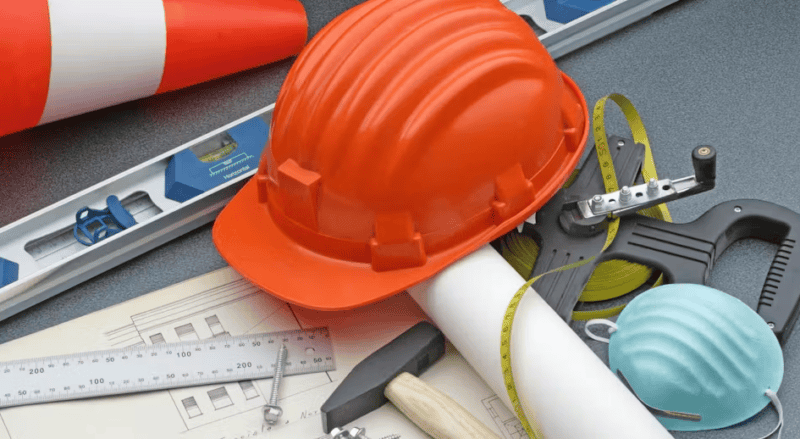The construction site is always changing, and there is a lot you must look out for. With all the moving parts, there are a variety of hazards and risks. This corresponds directly to the construction industry having the highest rate of workplace injuries and fatalities.
However, if workers understand the risks associated with active job sites, these accidents can be prevented. Here’s a safety representative’s guide to hazard identification and building safety awareness:
The Main Categories of Construction Site Hazards
- Environmental Hazards: These include extreme weather conditions, both hot and cold. These can put workers at risk due to ice, snow, and high or low temperatures. These variables can affect work and cause health problems.
- Physical hazards: For these, you can look at OSHA’s Focus 4: falls, caught-in-between, struck-by, and electrocution. These four hazards cause most workplace injuries or death.
- Ergonomic hazards: Most of the time, workers suffer musculoskeletal or soft tissue injuries. This is due to repetitive motion and incorrect body positioning or lifting techniques.
- Mechanical Hazards: Outdoor construction sites use heavy machinery such as cranes, excavators and bulldozers. Inside construction tends to see equipment such as man lifts, scissor lifts, and boom lifts. Using any of these without proper training can cause serious injury
- Chemical/substance hazards: Workers can encounter a variety of substances such as asbestos, lead, and cement dust. If these chemicals aren’t identified prior to construction, and the proper PPE isn’t being utilized, it can lead to long-term health issues.
- Electrical hazards: Improper use of electrical systems such as LOTO devices, GFCIs, or correct extension cords on job sites can lead to fires or serious electrical shock.
Why Safety Awareness is Important
- Creates a safety culture: advocating for a safety culture on site should be a priority for all businesses. If everyone works together to have the same mindset when it comes to safety, everyone can look out for one another to make decisions and complete tasks safely.
This also allows for open communication between the safety department and workers on site. When safety is part of the culture, they will feel more comfortable reporting concerns, and the employers can then act on these reports.
- Injury and accident prevention: By ensuring proper training through things like site safety orientation, toolbox talks, and company training, you will create a safer worksite. The more education workers have about these hazards, the easier it is to prevent injuries and accidents. Training also helps to correct unsafe conditions and behaviors.
- Long-term health and wellbeing: By investing in safety awareness and mental health services, employers can keep workers from facing long-term health challenges.
- Legal and financial responsibility: All employers have an ethical responsibility to keep their workforce safe, but they also have a legal one. Compliance with OSHA’s health and safety standards is required by law. By following these regulations, employers can prevent fines, penalties, and lawsuits. Maintaining a good safety record results in excellent relationships with clients, stakeholders, and employees.
Safety is a responsibility companies and their employees must share. By fostering safety awareness, you are creating an environment where workers feel respected and cared for. When everyone is safe and getting home at the end of the day, you are creating long-term success for your team.
Kevin Kolhonen, Health and Safety Manager
